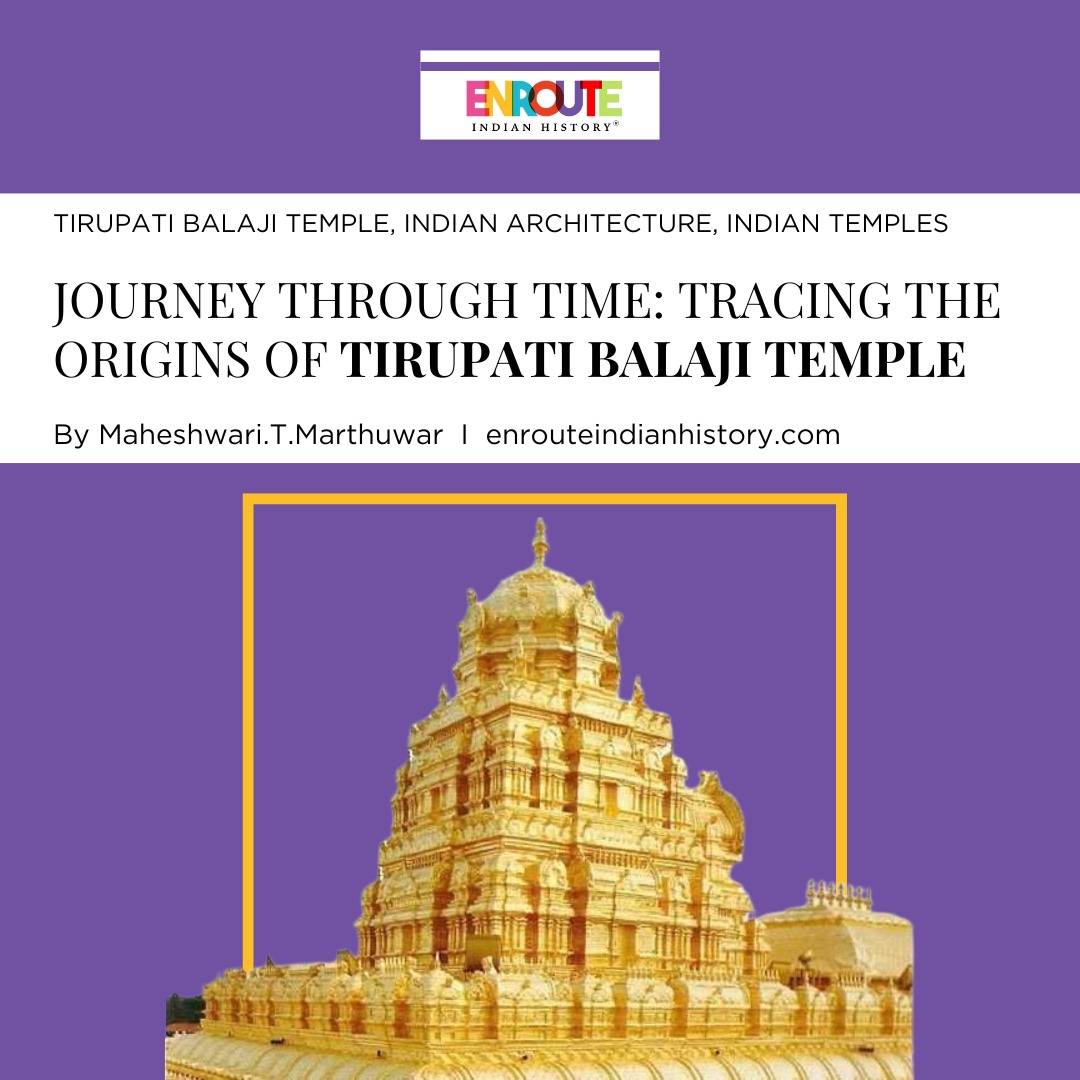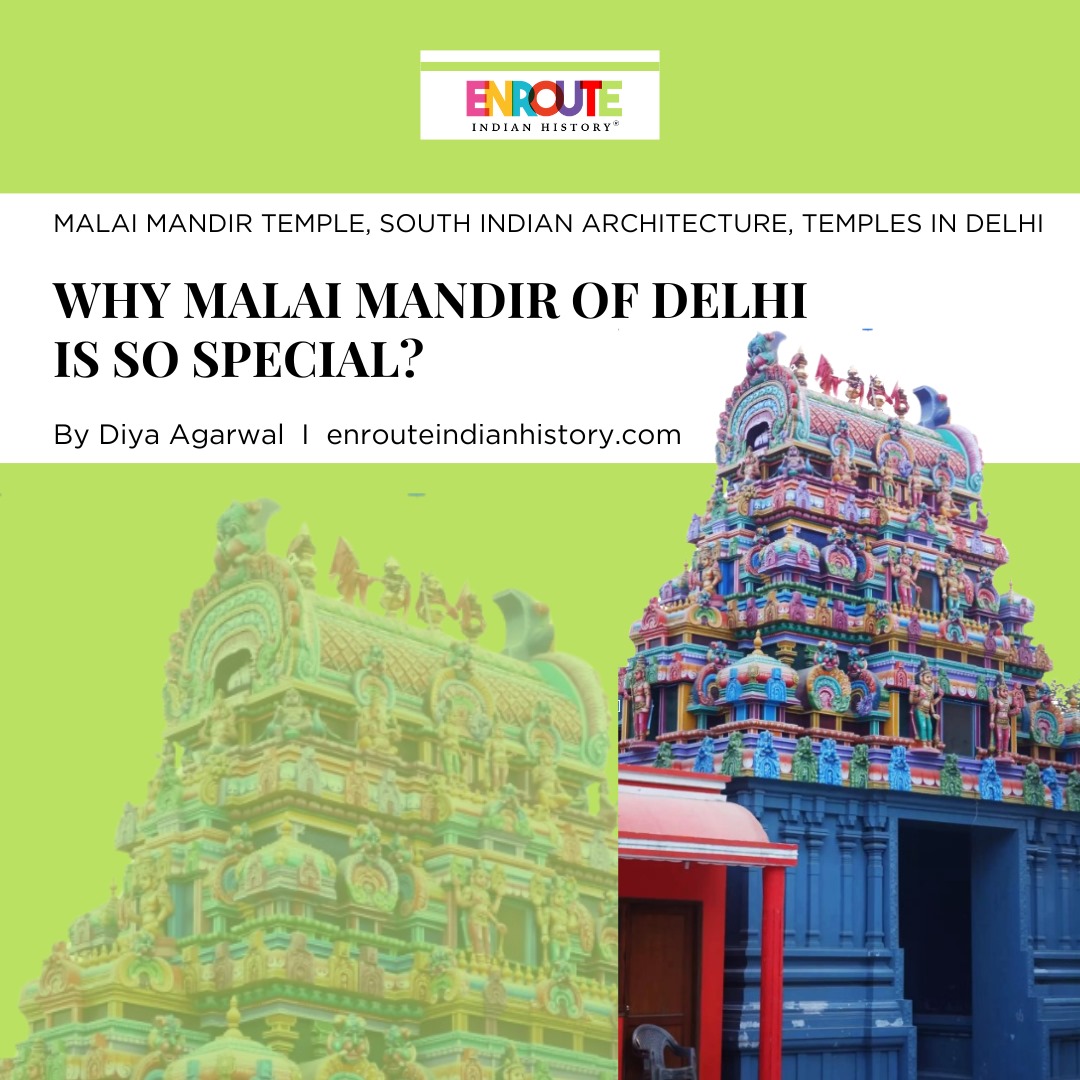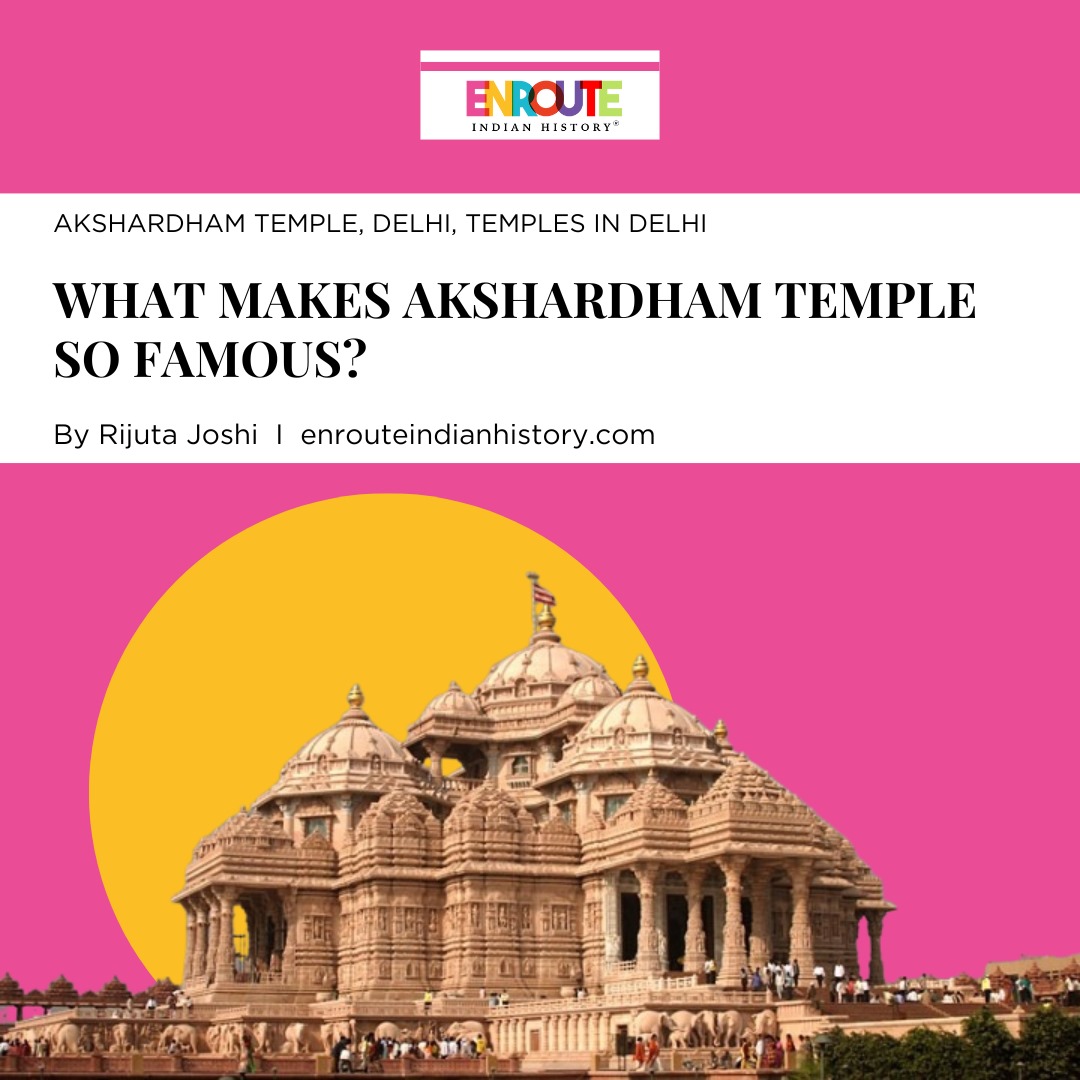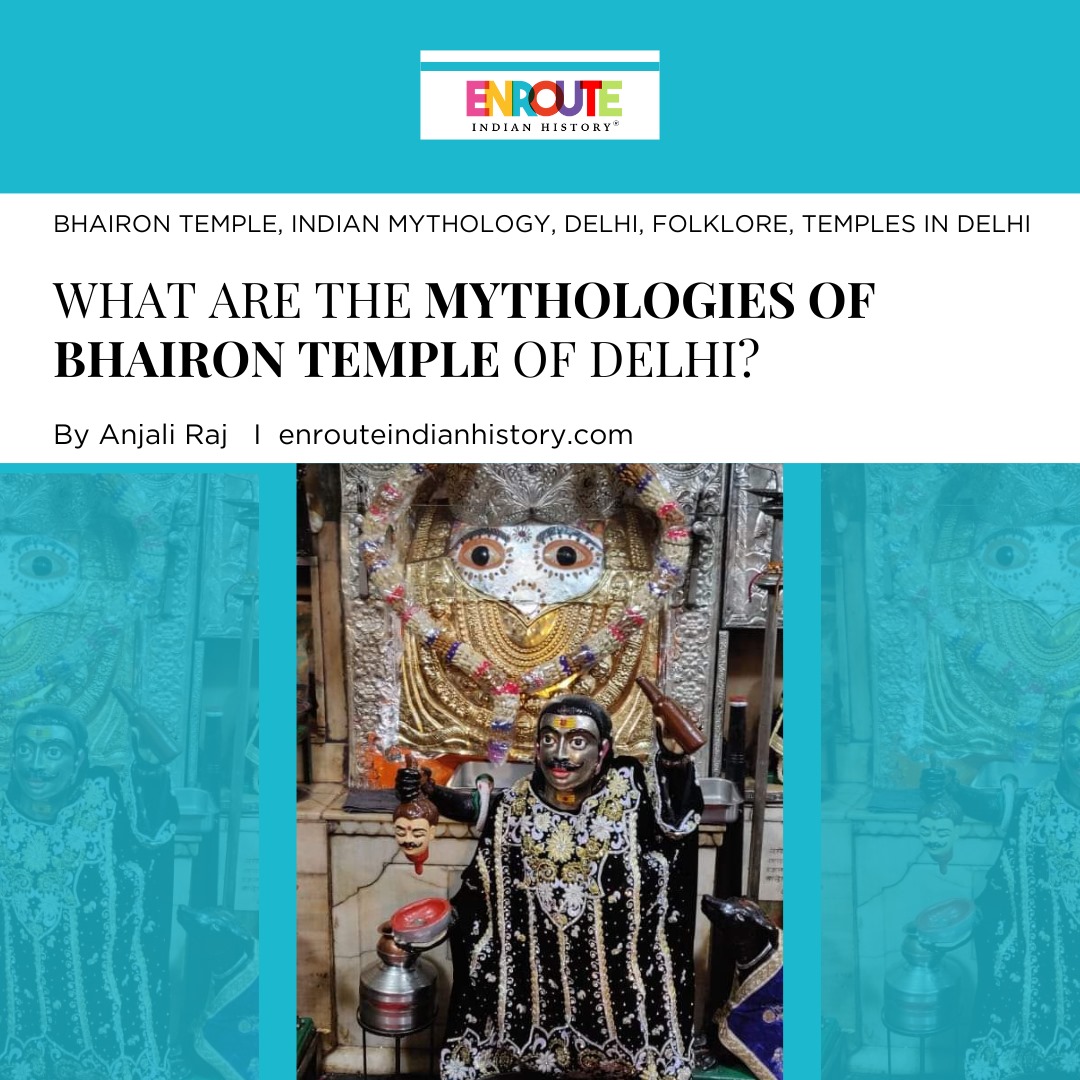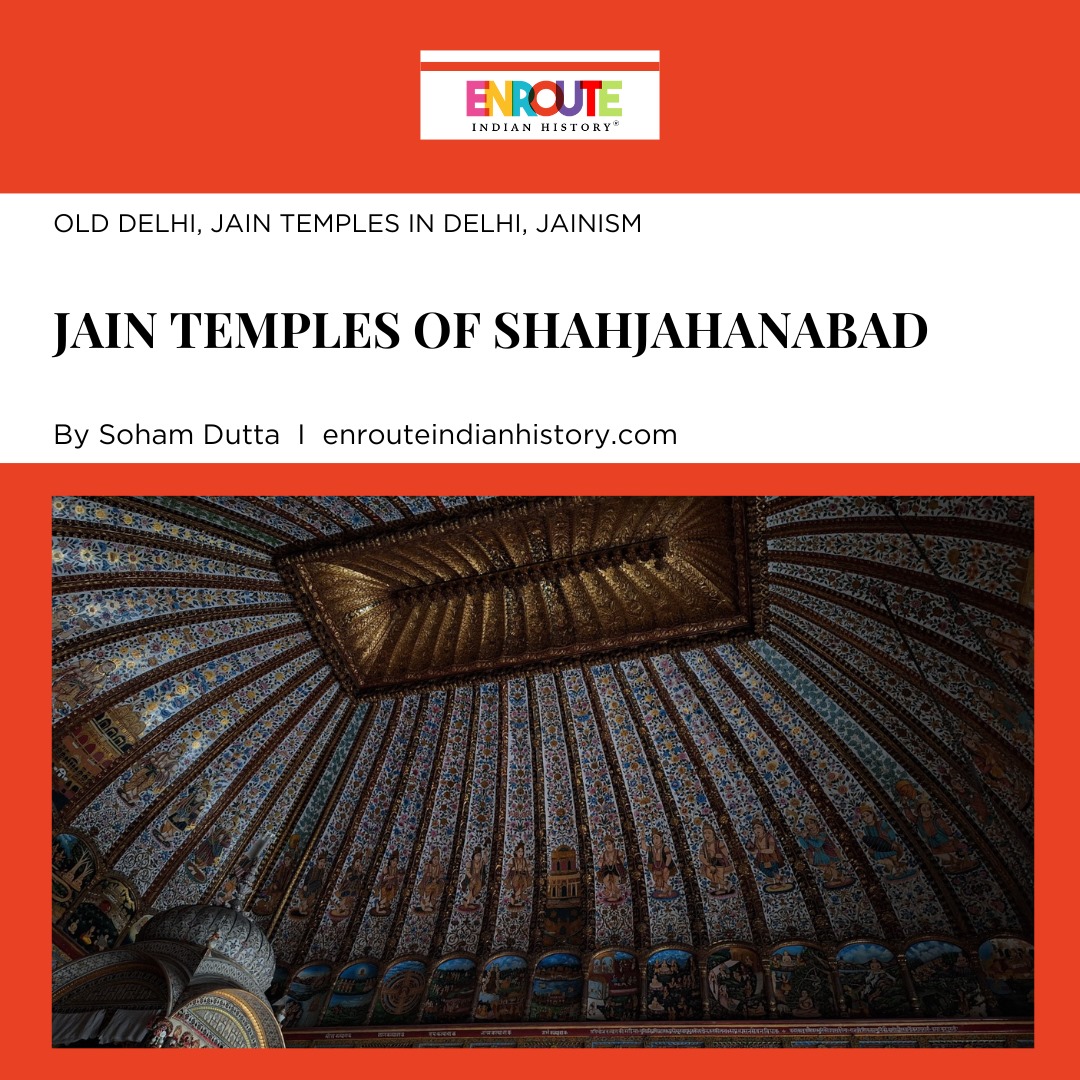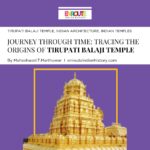The Significance of Raghu Rai’s Photographs in the Popular Imagination of Delhi
- enrouteI
- March 27, 2024
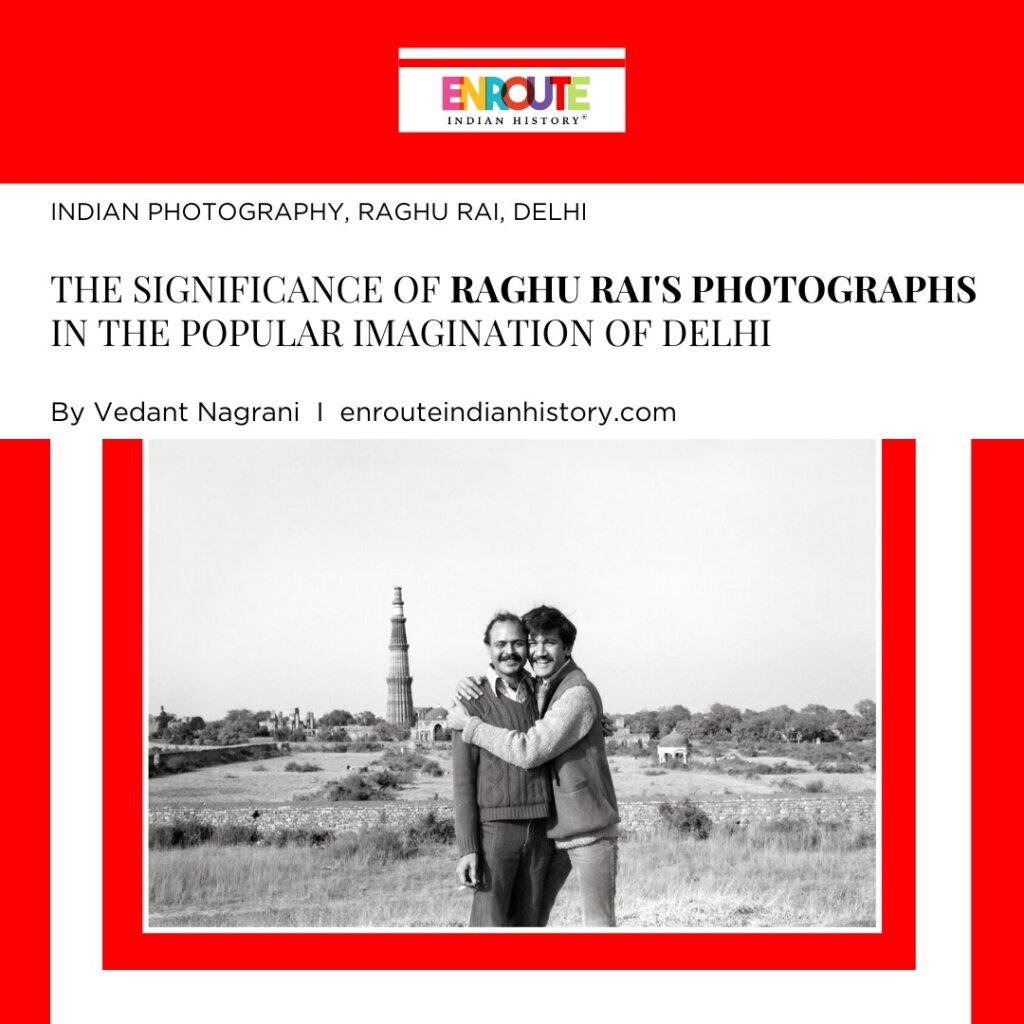

Cover Image for article: Self Portrait, Raghu Rai
Courtesy: Architectural Digest, Raghu Rai Foundation
“Life’s longing for itself- that is what I feel my photographs should reflect. Closer home, we have the divine concept of darshan, which is very precious to me. Darshan is not merely seeing a particular person or place, but the experiencing of the reality of a place, a person, the physical and the inner aura, reflected in its entirety-that is darshan. That is what I feel great photography is all about.”
–Raghu Rai, from Introduction, Picturing Time
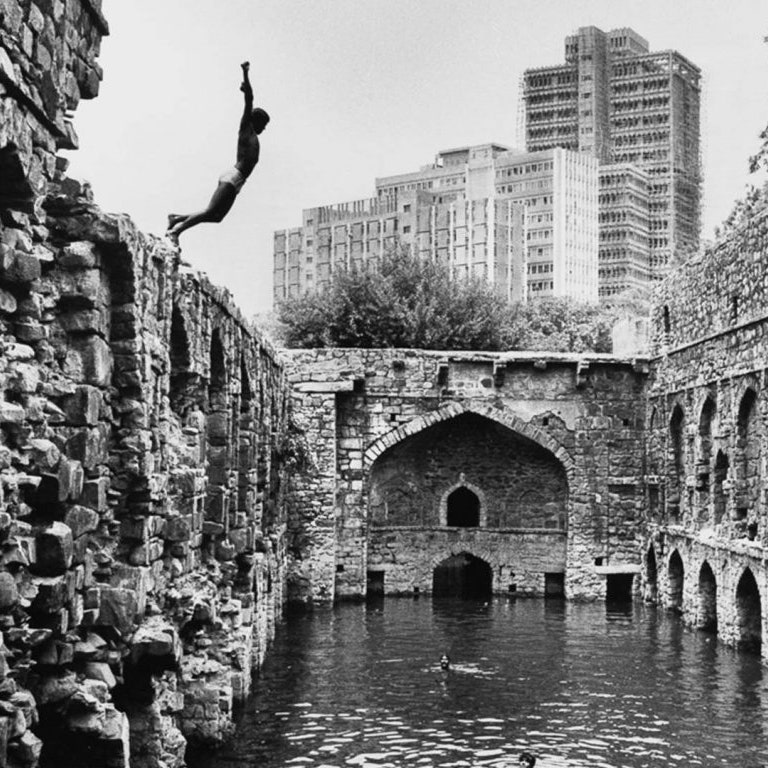
Diving into Ugrasen Baoli, 1971 by Raghu Rai
Courtesy: Aleph Book Company/Raghu Rai Foundation
The aforementioned philosophy of photography has been conceptualised by one of the best photographers of India, Raghu Rai. Often regarded as the Father of Indian Photography, his career spans over almost five decades and his black and white photographs have not only been groundbreaking but documents of visual history that have captured definitive moments in Indian history. Apart from his popular photographs of Delhi, Agra and Banaras, his work as a photojournalist is also commendable as he has closely and carefully documented various tragedies, movements and crises such as the Bhopal Gas Tragedy of 1984, the adverse conditions of Bangladeshi refugees in 1971 and the JP Andolan of 1974, among other significant events. His photographs have played a major role in documenting history as well as shaping the popular imagination of the city of Delhi. This essay examines the significance of Raghu Rai’s photographs of Delhi and their role in documenting the history of the city as well as shaping its popular imagination.
According to the French Marxist sociologist Henri Lefebvre, the popular conceptualisation of space has historically only been in terms of its physical aspects. In his remarkable book The Production of Space, Lefebvre argues that any given space is a product of social factors and it further affects social relations and practices. His conceptualisation of a space with its physical, mental and social aspects is also applicable to spaces such as cities. While photography plays a major role in capturing a city, there are various methods, purposes and approaches to do so. Raghu Rai’s photographs not only capture the physical aspects of the city with stark realism but also its social realities and practices. His photographs do not distinguish between the “mundane” and the “grand” moments of life as their focus is on capturing the essence of life itself which involves a fair share of both as do his photographs. Both, his photograph of a little girl running in the gardens of Humayun’s Tomb and his classic portrait of an introspective Indira Gandhi in Shimla , though capture very different subjects, share his commitment to the depiction of reality and life whether it be mundane or grand.
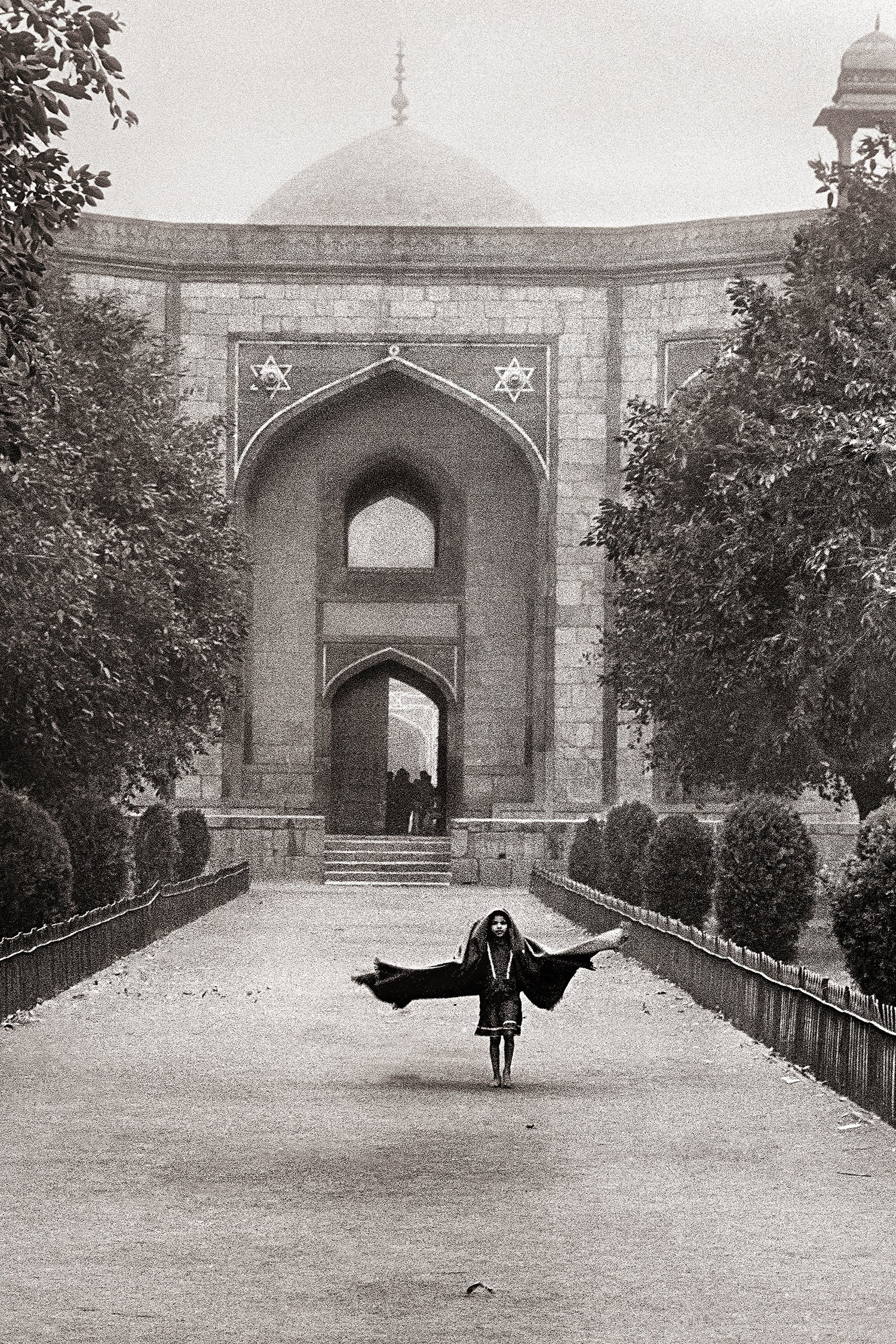
Breezy Girl, Humayun’s Tomb by Raghu Rai, 1973
Courtesy: Aleph Book Company, Raghu Rai Foundation
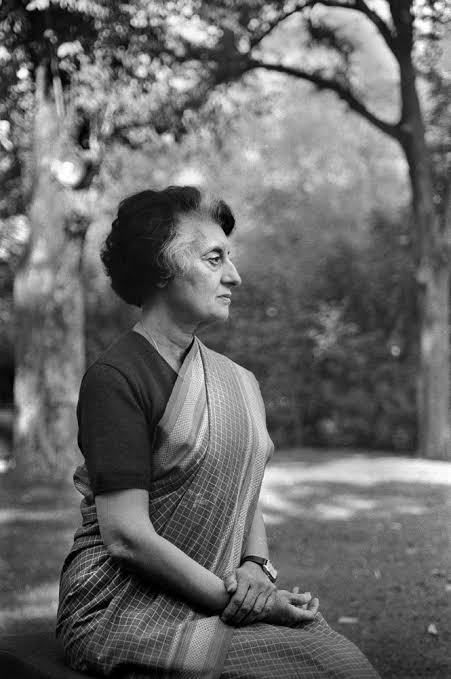
A portrait of Indira Gandhi by Raghu Rai titled “In Shimla”, 1972
Courtesy: Raghu Rai Foundation
His deep commitment to his photographic philosophy is a result of his belief in the Indian concept of Darshan that is based on witnessing not just the physical or material reality of an object or a being but witnessing its reality in the form of its very spiritual and social existence. It seeks to find the very essence of truth in the object and hence, his photographs do not merely reflect Delhi and its residents in a realistic manner but they go beyond that as they find all shades of life in their subject’s everyday activities, loss, death, prayers and other social practices and realities.
Though several of his photographs are very closely captured, one does not feel the presence of a camera as an artificial or unnatural existence in the subject’s life. This is because Raghu Rai, as Roobina Karode and Devika Daulet-Singh also note, does not engage in photography as other photographers do in their desire to capture the perfect photograph. Rai instead chooses to become a part of his subject’s life until he becomes an “absolute insider” and the subject becomes indifferent to his presence. Hence, Rai’s photographs are not intrusive or invasive but rather, they are testimonies to his control over his craft that invisibilise his presence in order to capture the subject with as much accuracy and make it the primary focus of his photographs. Though Rai invisibilises himself in his photographs, these photographs always contain a trace of his vision, inspired by the darshan philosophy, that guides them. As is evident above, the presence of a human photographer despite all its attempts to invisiblise the photographer, cannot evade the impact of the photographer’s vision on the photograph and hence, can never achieve an absolute objective depiction of social reality and history. Despite this limitation, Rai’s photographs are very close to capturing social realities in as objective a manner as possible.

Chawri Bazar, Old Delhi by Raghu Rai, 1964
Courtesy: Aleph Book Company, Raghu Rai Foundation
For instance, his wide-angle shot of Chawri Bazaar seems very similar to an ancient Chinese scroll painting that consists of a myriad of human activity occurring simultaneously yet allowing the viewer to choose which part of the photograph to focus on. Hence, his photographs depict social reality with immense objectivity yet they leave space for subjective interpretation.
Though his photographs are governed by an aim of accurately capturing reality, they never seem to be artificial due to their committed focus on capturing human lives. For Rai, histories and social realities are not merely what official documents or state historiography constitutes them to be and they extend far beyond that and involve people’s lived experiences. His photographs do not merely capture the various buildings and architectural innovations of the city but the people that constitute the city.

Evening Prayer, Jama Masjid by Raghu Rai,1985
Courtesy: Aleph Book Company, Raghu Rai Foundation
For instance, his famous black and white photograph of a woman praying in her home with the backdrop of Jama Masjid combines the personal with the social in such a memorable way that it connects with the day-to-day activities of millions of such common people in Delhi and ensures that the image influences their imagination of Delhi that does not merely have the grandeur of Mughal architecture or the Lutyens’ Delhi but also has an integral space for their existence and representation.

Humayun’s Tomb, Delhi, by Raghu Rai, 1966
Courtesy: Aleph Book Company, Raghu Rai Foundation
Apart from Raghu Rai, innumerable photographers have captured Delhi both before and after Independence. For instance, Homai Vyarawalla, India’s first woman press photographer captured the architectural beauty of Connaught Place which she called a “pearl necklace”. She played a major role in capturing the cityscape post-Independence, as India attempted to shed off the impact of colonial rule on its capital city. She also captured Jama Masjid during Eid in 1940s using a wide-angle shot, depicting both the people as well as the Masjid. Her photographs have played a major role in capturing Delhi and its people in the pre-Independence period, in the transitional period as well as post-independence. She has also captured major historical events as a photojournalist such as Mahatma Gandhi’s funeral, Republic Day parades, etc. in Delhi.
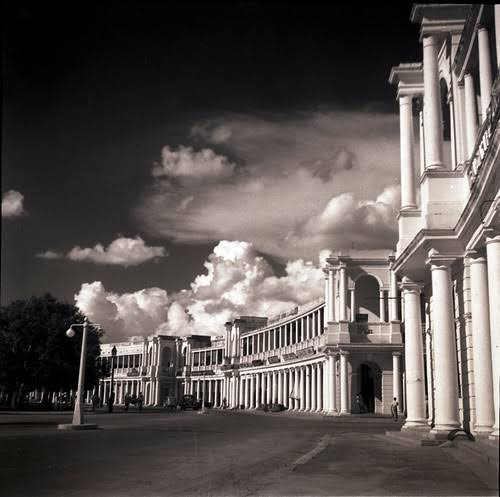
Connaught Place, New Delhi by Homai Vyarawalla
Courtesy: Homai Vyarawalla Archive, The Alkazi Foundation of Photography
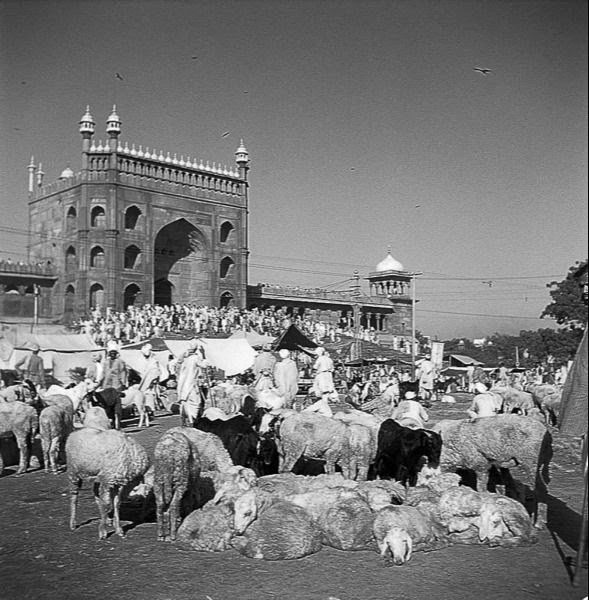
Delhi’s Jama Masjid during Eid, 1950s by Homai Vyarawalla
Courtesy: Homai Vyarawalla Archive, The Alkazi Foundation of Photography
Other photographers such as Ram Rahman and Sunil Gupta have also captured different aspects of Delhi. According to MAP Academy, Ram Rahman has “captured grave upheavals such as the 1984 anti-Sikh riots in Delhi to scenes from fairs, festivals, tea-shops, wrestling clubs and so on. These photographs meld the composure and formal attention of art photography with a documentary style. Thus, they fuse the personal with the public and fine arts with popular culture and capture with a sense of humour and irony, the contradictions between these polar opposite sensibilities.”
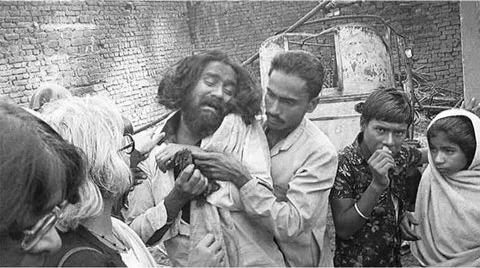
Anti-Sikh Riots, Delhi 1984 by Ram Rahman
Courtesy: ArtBuzz
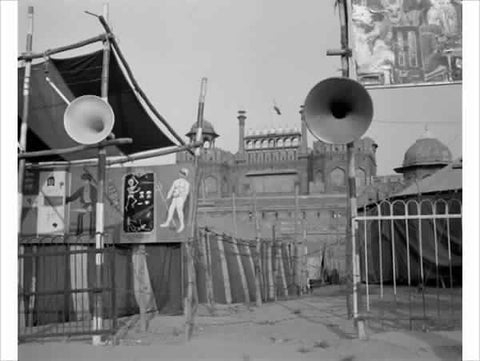
Red Fort, Delhi ,1966 by Ram Rahman
Courtesy: ArtBuzz

The Funeral of Safdar Hashmi, 1989 by Ram Rahman
Courtesy: ArtBuzz
Unlike all the photographers mentioned so far, Sunil Gupta has played a major role in documenting the queer cultures of love in India. His photographs of Delhi from the series Cruising, Exile and Towards a Gay Indian Image have not only captured Delhi but they have also created a unique queer visual archive located in various parts of India, especially Delhi. His photographs also play a major role in queering famous monuments of Delhi that were previously looked at as spaces only for heteronormative individuals and couples.
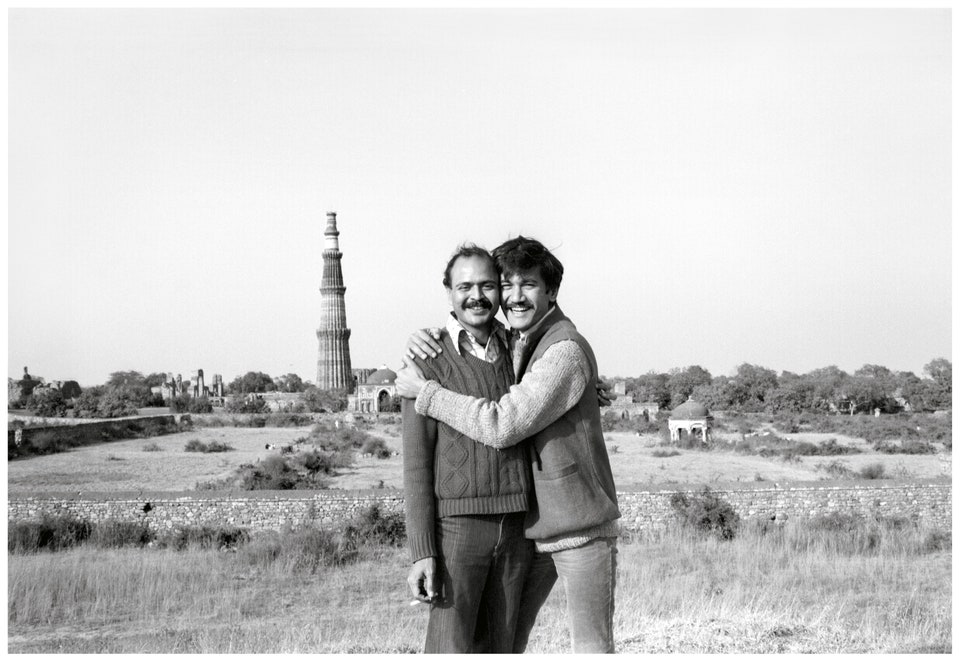
Saleem Kidwai And Me, Qutb Minar’, from the series Towards A Gay Indian Image,1983 by Sunil Gupta
Courtesy: Vogue India
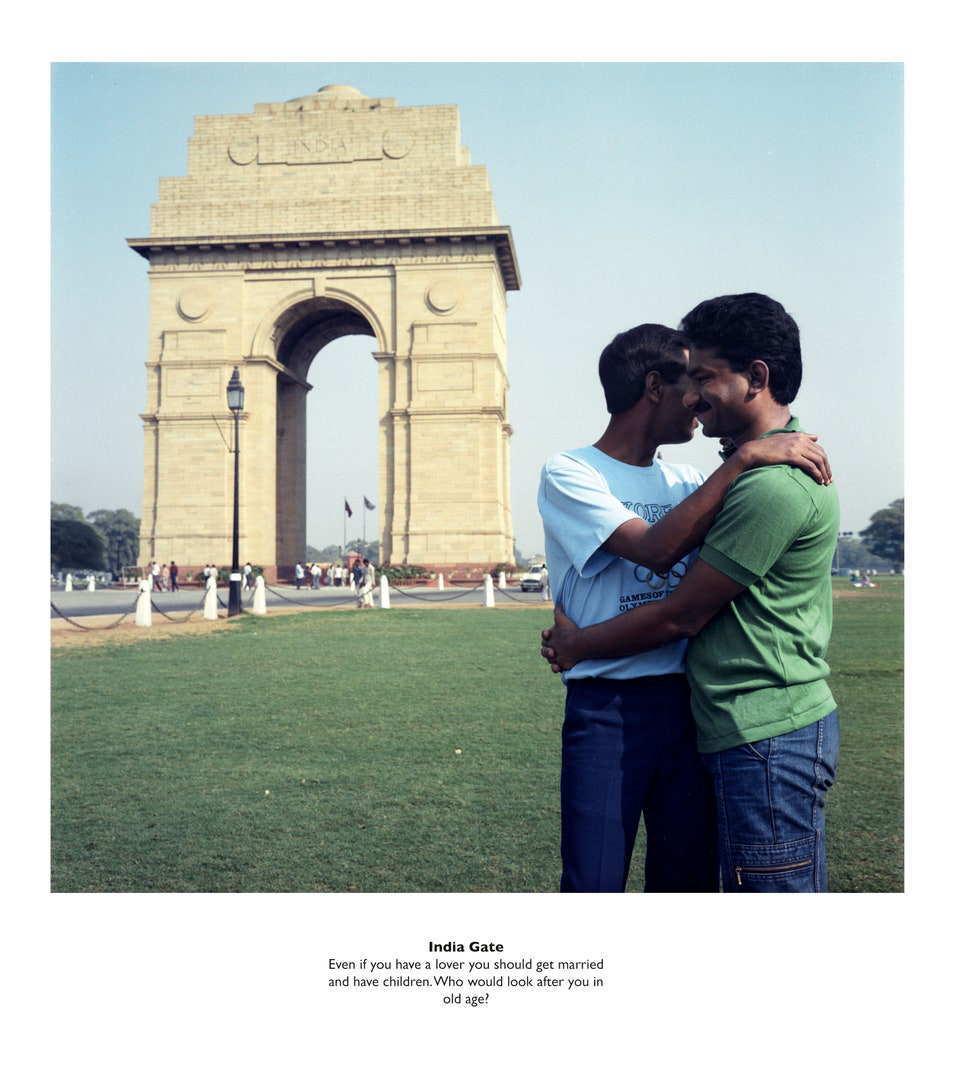
‘India Gate’, from the series Exiles, 1987 by Sunil Gupta
Courtesy: Vogue India
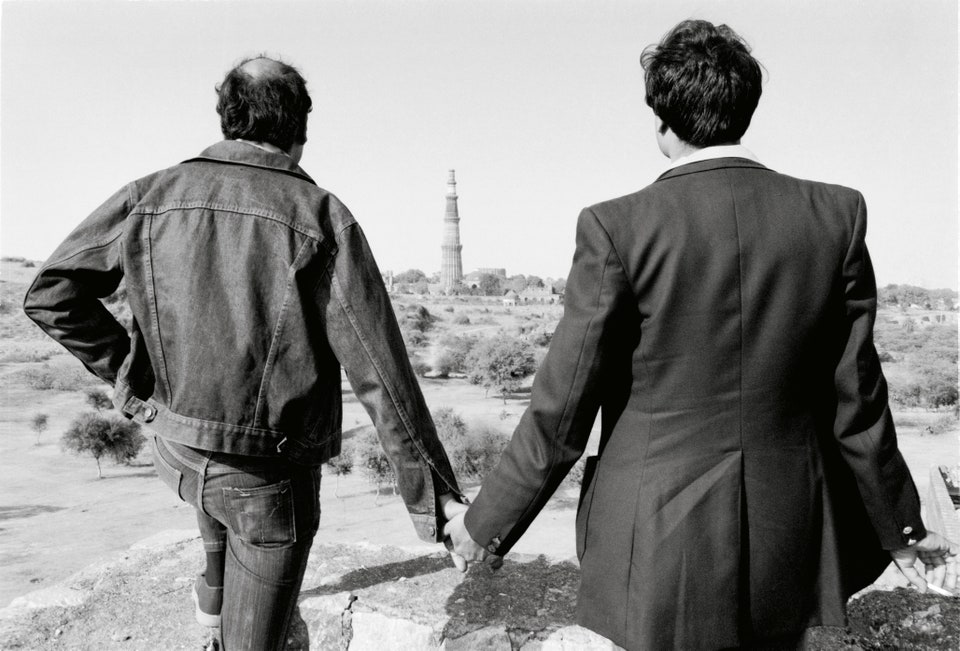
Qutb Minar #2’, from the series Towards A Gay Indian Image, 1983 by Sunil Gupta
Courtesy: Vogue India
As John Berger notes in his seminal text Ways of Seeing:
“Seeing comes before words. The child looks and recognizes before it can speak.” Rai’s photographs recognise this and the importance of visually capturing reality.
His ethic of photojournalism deeply coupled with his commitment to the philosophy of darshan has ensured that his photographs do not merely document Indian histories but also lives of Indians throughout several decades and it is precisely because of this that his photographs are so timeless. They have not only succeeded in creating their own imagination of Delhi but they have also led to a major intervention in city photography that makes it impossible to capture a city’s might and plight without capturing its people. In his visualisation and re-visualisation of Delhi, Rai has captured the beauty and history of the city in a way that very few photographers have managed to do and hence his documentation of Delhi has not only influenced its photography but also the visual perception of Delhi.
Works Cited
Rai, Raghu. Picturing Time: The Greatest Photographs of Raghu Rai. Aleph Book Company, 2015.
Rai, Raghu. “Breezy Girl, Humayun’s Tomb.” Picturing Time: The Greatest Photographs of Raghu Rai. Aleph Book Company, 2015.
Rai, Raghu. “Chawri Bazar, Old Delhi” Picturing Time: The Greatest Photographs of Raghu Rai. Aleph Book Company, 2015.
Rai, Raghu. “Evening Prayer, Jama Masjid” Picturing Time: The Greatest Photographs of Raghu Rai. Aleph Book Company, 2015.
Rai, Raghu. “Diving Into Ugrasen Baoli” Picturing Time: The Greatest Photographs of Raghu Rai. Aleph Book Company, 2015.
Rai, Raghu. “Humayun’s Tomb, Delhi” Picturing Time: The Greatest Photographs of Raghu Rai. Aleph Book Company, 2015.
Rai, Raghu. “Introduction”. Picturing Time: The Greatest Photographs of Raghu Rai. Aleph Book Company, 2015.
Rai, Raghu. Delhi…That Was. Ojas Art, 2012.
India Art Fair. “My Name is a Photographer:Raghu Rai.” India Art Fair, 31 Jan 2024, indiaartfair.in/my-name-is-a-photographer-raghu-rai.
Bhura, Sneha. “Making visual history is different from taking pretty Insta photos: Raghu Rai.” Times of India. 2 Mar 2024.
Khan, Faizal. “Raghu Rai:’Let’s face it, half of India lives on the streets. That social thread of daily life, we can’t ignore'” Money Control. 4 Feb, 2024.
Lefebvre, Henri. The Production of Space. Blackwell, 2009.
Berger, John. Ways of Seeing. Penguin Books, 1972.
India Art Fair. “10 Iconic Indian Photographers.” India Art Fair, 27 Sep 2022.
Bhandara, Neville. “Why photographer Sunil Gupta will never stop doing what he does.” Vogue India, 4 Aug 2022.
Bhakuni, Tanuja. “Raghu Rai’s Delhi.” Zikr-e-Dilli. 14 Mar 2021.
Singh, Shweta. “The World of Raghu Rai: His Photography & Life.” Purpose Studios. 13 Jan 2022.
Sacheti, Priyanka. “Why I Love Art: How Raghu Rai’s Photograph Changed My Approach to Photography.” MAP India. 28 Aug 2021.
Harris, Mark Edward. “Raghu Rai: The Art of Mindfulness.” Black & White.
Gadihoke, Sabeena. “Cities and Spaces.” Homai Vyarawalla Archive. Alkazi Foundation.
MAP Academy. “Ram Rahman.” MAP Academy.
- April 25, 2024
- 25 Min Read
- April 25, 2024
- 14 Min Read


